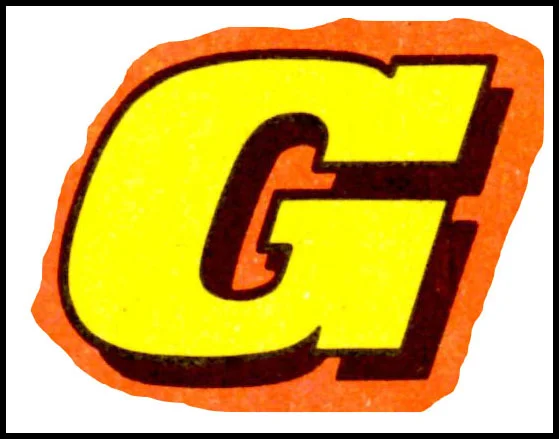On this day, 6 February 1971: Tammy
Cover artwork: artist unknown
On this day, 6 February 1971 … Despite a record-breakingly warm start to the year, the usual rain, wind and snow had returned to British shores by the end of January and start of February 1971, so this bright and summery painted artwork cover on the launch issue of Tammy must have seemed particularly attractive, if a little unseasonal. Inside, the cheery, positive tone continued throughout, with the editorial and ‘Tammy Club’ page using the word ‘exciting’ with liberal abandon. With eleven drama-packed first episodes, and a make-your-own charm bracelet free gift (I’ve checked, but it wouldn’t fit me so I decided not to try putting it together), it’s evident that this must indeed have been an exciting comic to buy.
Those readers lucky enough to have got this first issue at the time were in at the very beginning of what is perceived by some to mark the start of a revolution in British comics. At a time in which comics (girls’ and boys’) produced by both IPC and DC Thomson were still of the old-school tradition characterised by rather idealised or over-fantastical protagonists and storylines, almost always with a happy ending, Tammy, edited at first by Gerry Finley-Day, would be the first to embrace a more realistic sensibility, featuring girls more representative of their readership in adventures that didn’t always end with a smile. Jinty would become a sister paper to Tammy in 1974, and followed a similar path, while in the boys’ department, writers such as Pat Mills and John Wagner brought the Tammy influence to the likes of Battle, Action and 2000AD.
So what was the line-up of this first issue? Tammy kicked off with The Secret of Trebaran, a time-travelling tale set on a misty island off the coast of Cornwall. The Girls of Liberty Lodge featured an idealistic young teacher walking out on a draconian boarding schoolin order to found a ‘kinder, gentler’ kind of educational establishment. Slaves of ‘War Orphan Farm’ followed the travails of a group of WWII child London evacuees living on a cruelly-run country farm, while Dawn and Kerry: Double for Trouble was a contemporary adventure story starring two best pals investigating the mystery of Whispering Heights mansion.
‘Our Janie’ featured the oldest sister of four, who becomes a mother figure to her siblings following their real mum’s death and dad’s injury following a work accident. Betina at Ballet School follows what seems to me to be one of the most over-used storyline in girls’ comics – a girl from a disadvantaged background pursues against all odds her dream of becoming a ballerina. My Father – My Enemy is a harsh tale of a girl defying her bastard of a dad by offering help to the impoverished miners living in his community. This is followed by the comic’s lightest strip, Courier Carol, about a school-leaver who helps out with her eccentric uncle’s creaky bus tour service.
Glen is a dog, saved from his cruel master by a young girl called June. The Castaways on Voodoo Island are twelve classmates who win a holiday to the Caribbean, but whose plane crashes in the ocean leaving them stranded on a mysterious tropical island. There they discover a remote, fully-furnished house, and the island is shaken by earth tremors, all of which led me to wonder whether this comic was ever read by the makers of Lost. The final story in this launch issue became one of its longest-running and best-remembered stories. Set in 1926, No Tears for Molly followed the fortunes of Molly Mills, an East End girl who travelled to work as a much-put-upon maid alongside the grumpy Pickering the butler at Stanton Hall in Devon.
The Secret of Trebaran: Giorgio Cambiotti (artist)
The Secret of Trebaran: Giorgio Cambiotti (artist)
The Secret of Trebaran: Giorgio Cambiotti (artist)
The Girls of Liberty Lodge: Dudley Pout (artist)
The Girls of Liberty Lodge: Dudley Pout (artist)
Slaves of ‘War Orphan Farm’: Gerry Finley-Day (writer), Desmond Walduck (artist)
Dawn and Kerry: Double for Trouble: Maureen Spurgeon (writer), Giorgio Letteri (artist)
Dawn and Kerry: Double for Trouble: Maureen Spurgeon (writer), Giorgio Letteri (artist)
‘Our Janie’: Colin Merrett (artist)
‘Our Janie’: Colin Merrett (artist)
‘Our Janie’: Colin Merrett (artist)
Betina at Ballet School: creators unknown
My Father – My Enemy: creators unknown
Courier Carol: Jean Sidobre (artist)
Courier Carol: Jean Sidobre (artist)
Castaways on Voodoo Island: Ken Houghton (artist)
Castaways on Voodoo Island: Ken Houghton (artist)
Castaways on Voodoo Island: Ken Houghton (artist)
No Tears for Molly: Maureen Spurgeon (writer), Tony Thewennetti (artist)
No Tears for Molly: Maureen Spurgeon (writer), Tony Thewennetti (artist)




























